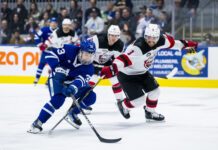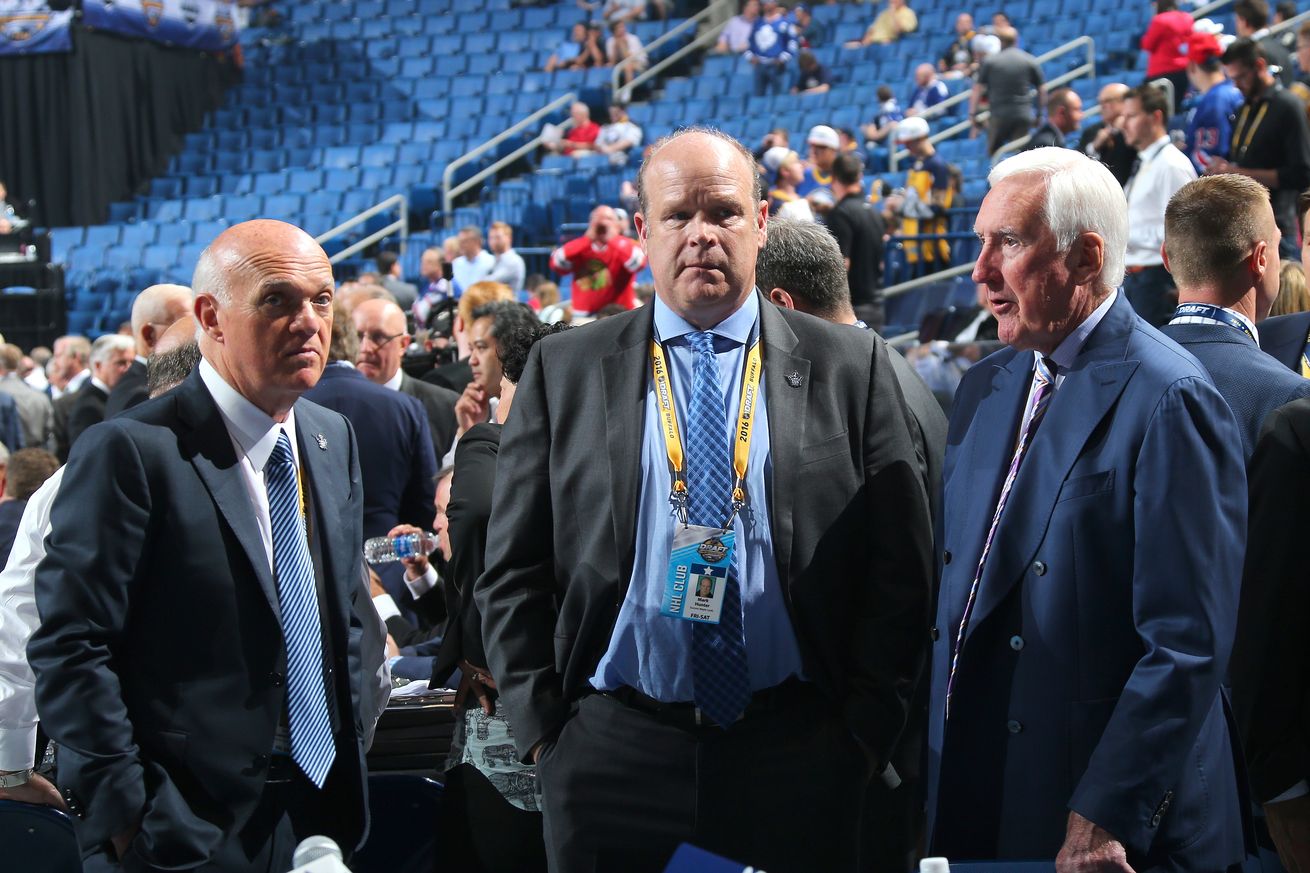In the 2016 NHL Draft, the Toronto Maple Leafs used five of their 11 draft picks to select overage players (players that aren’t in their first season of draft eligibility).
At the time, this created a fair amount of confusion. Conventional wisdom would indicate that selecting a player that has already gone through at least one draft without being selected isn’t a smart idea.
In April, Zac Urback made a post on my site called “Draft Inefficincies: Overage Prospects,” where he talked about using the draft model, DEV, that we worked on in order to identify overage prospects worth drafting that would typically be passed over. This is a strategy I line up with, but I was somewhat wary; in that post, we never showed definitively that drafting overage players regularly is a solid strategy for finding value in the draft.
Since this strategy was used to some degree by the Toronto Maple Leafs recently and the previously mentioned article has been getting more attention, it’s worthwhile to show that drafting overage players is a smart strategy. To do this, we’ll be looking at the NHL drafts from 1996 – 2008 and the percentage of players from those drafts that became successful NHL players. (A player is classified as successful if they played at least 200 games in the NHL. Goalies are not included in the data set. Only CHL players are included in order to account for the 2005 CBA change.)
Naturally, the first thing is to look at the totals for how many draft year players were drafted and became successful, and then to do the same for overage players. When we do this, we see that there were 931 first-time draft eligible players selected and 249 became successful. This gives draft year players a success rate of 26.75%. For overage players, there were 160 selected and 31 became successful — a 19.38% success rate.
Now, if you stop there and say overage players are a bad bet because of their overall success rate, you’re observing things improperly. What we’ll see as we explore this further is that the total figure is skewed in a way that favours draft year players.
The first thing we’ll do is separate things based on whether the players are forwards or defencemen.
All Rounds - Draft Year vs. Overage
| Forwards | Selected | Successful | Success Rate |
|---|---|---|---|
| Draft Year | 565 | 163 | 28.85% |
| Overage | 116 | 23 | 19.83% |
| Defense | Selected | Successful | Success Rate |
|---|---|---|---|
| Draft Year | 366 | 86 | 23.50% |
| Overage | 44 | 8 | 18.18% |
We see that the difference in success rate of draft-year defensemen compared to overage defensemen is smaller than with forwards. However, this still paints a picture that suggests choosing draft-year players instead of overage players will yield better results. What’s actually going on here is this is distorted by the first two rounds of the draft. Looking solely at the first round will give us this outcome.
Round 1 & 2 - Draft Year vs. Overage
| Forwards | Selected | Successful | Success Rate |
|---|---|---|---|
| Draft Year | 218 | 108 | 49.54% |
| Overage | 13 | 3 | 23.08% |
| Defense | Selected | Successful | Success Rate |
|---|---|---|---|
| Draft Year | 134 | 60 | 44.78% |
| Overage | 2 | 1 | 50.00% |
Inside the first two rounds, what’s important to note is the number of players selected compared to the total size of that group. 37.81% of draft-year players that are selected are taken in the first two rounds of the draft. However, for overage players, only 9.38% of them are taken in the first round. Because of this, looking at the total success rate will give a skewed view of the success rates because a significantly larger portion of draft year players were taken in the first two rounds than for overage players. What this means is that the total figure for draft-year players benefits from the high success rates of players taken in the first two rounds more than the overage group does. When we look just at players selected after the seconds round, we get these results:
After Round 2 - Draft Year vs. Overage
| Forwards | Selected | Successful | Success Rate |
|---|---|---|---|
| Draft Year | 347 | 55 | 15.58% |
| Overage | 103 | 20 | 19.42% |
| Defense | Selected | Successful | Success Rate |
|---|---|---|---|
| Draft Year | 232 | 26 | 11.21% |
| Overage | 42 | 7 | 16.67% |
[wpdatachart id=50]
[wpdatachart id=51]
Here we see that there is a higher success rate for overage players selected after the second round for both forwards and defenders. It’s not an incredible difference, but it definitely seems that looking to overage players after the second round will yield NHL players more often than targeting draft-year players will.




































